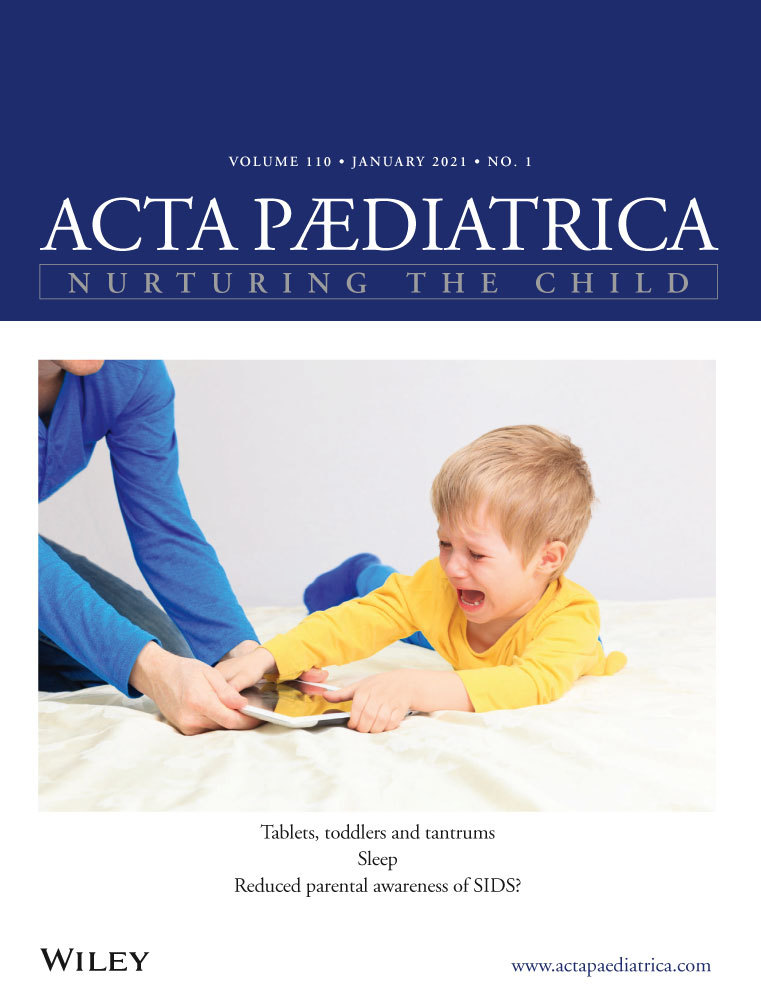Predicting poor physical activity outcomes in children born extremely preterm or extremely low birthweight
Funding information
Kate Cameron's PhD candidature is supported by an Australian Government Research Training Program Scholarship and the National Health and Medical Research Council of Australia Centre of Research Excellence in Newborn Medicine (#1153176); JC and AS are supported by Career Development Fellowships from the Medical Research Future Fund of Australia (#1141354) and the National Health and Medical Research Council of Australia (#1108714), respectively.
1 COMMENTARY
With increased survival of children born EP/ELBW, it is important to understand long-term health and development,1 with many international cohort studies reporting poorer neurodevelopmental outcomes across multiple domains for children born EP/ELBW compared with term.2, 3 Less is known, however, about functional outcomes, including PA participation, for children born EP/ELBW.
Using a purpose-built questionnaire at 11 years of age, Engan and colleagues found children born at term had better PA outcomes compared with children born EP/ELBW. Within the EP/ELBW group, those without NDD had better PA outcomes. Motor, cognitive and behavioural difficulties at 5 years were considered as possible predictors of PA for children born EP/ELBW, with all three predictors associated with poorer PA outcomes at 11 years.4
The authors specifically considered children born EP/ELBW without NDD, choosing to focus on ‘more subtle problems’, which are often overlooked but can have significant implications.
Previous cohort studies have measured PA-related outcomes, including exercise capacity and PA minutes for children born preterm compared with term, with variable findings including modest differences in PA time5 and no difference in PA time but reduced exercise capacity.6 As acknowledged by Engan and colleagues, differences in methodology and cohort characteristics make it difficult to make comparisons.4
The authors identified follow-up rates as a study limitation; the children without PA data from the EP/ELBW group were more likely to have NDD than children with data, which may have decreased the true magnitude of group differences.4 A strength of this study was the consideration of PA as an outcome measure, focusing on what children are doing in a real-world context rather than how they perform under test conditions. Children born EP/ELBW without NDD have greater rates of developmental difficulties compared with children born at term, and this has implications for PA participation.
During childhood, PA participation promotes motor skill development and provides opportunity for social and emotional development. PA has physical (cardiovascular fitness, muscle strength, etc) and mental health benefits,7 and may improve a range of health and developmental difficulties for which individuals born EP/ELBW are at greater risk than those born at term.2, 8 This research is valuable in that it looks beyond disability or impairment in children born EP/ELBW, and towards PA participation, a construct more closely aligned with meaningful quality of life. This study contributes towards emerging research considering PA outcomes for children born EP/ELBW, as well as predictors of poor PA participation, essential for providing timely intervention. This is important in the EP/ELBW population with known risk factors for poor PA participation, such as motor impairment.2 Clinicians working with children born EP/ELBW should consider assessing PA, and work with families to promote meaningful participation in activities preferred by the child. Further research on PA, using large prospective cohort studies with EP/ELBW and term children, is needed.1 Where possible, objective PA measures (such as accelerometry) and questionnaires with established psychometric properties should be used, though it is acknowledged that there is no consensus on the best way to measure PA participation.
CONFLICTS OF INTEREST
None.
URL TO THE FULL REVIEW ON THE EBNEO WEBSITE
https://ebneo.org/2020/08/physical-activity-outcomes-extremely-low-birthweight/




